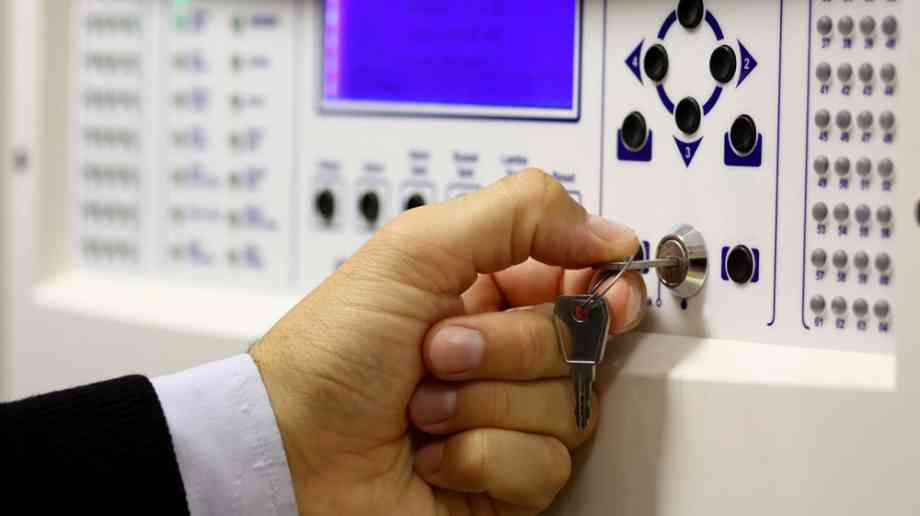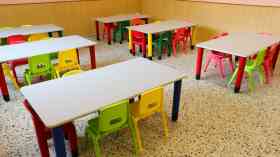
The management of fire detection systems
Jamie Gale, technical officer at the Fire Industry Association, outlines the responsibilities placed upon premises management in maintaining, overseeing and ensuring compliance of fire detection and alarm systems
The management of fire detection and fire alarm systems within non-domestic premises is a crucial responsibility.
BS 5839-1 is the Code of Practice for the design, installation, commissioning and maintenance of fire detection and fire alarm systems in non-domestic premises. The current revision dates back to 2017, however a new revision is due to be published mid to late 2024.
Compliance with the recommendations detailed in this standard is vital for the safety of persons within buildings, ensuring they have suitable and sufficient warning of fire, and also for protection of property.
This article aims to outline the responsibilities placed upon premises management in maintaining, overseeing, and ensuring compliance of their fire detection and fire alarm systems.
The responsible person
The first point to note is that there needs to be a designated person appointed as the Named Premises Manager. This individual holds the pivotal role of supervising all matters pertaining the fire detection and fire alarm system within their premises. The role of this person is to ensure that the system is tested and maintained in accordance with the recommendations of BS 5839-1, that appropriate and suitable records are kept, and also, that relevant occupants in the protected premises are aware of their roles and responsibilities in connection with the fire detection and fire alarm system. This person also needs to ensure that necessary steps are taken to avoid situations that are detrimental to the standard of protection afforded by the fire detection and fire alarm system and to ensure that the level of false alarms is minimised.
Service and maintenance
One of the primary responsibilities of the Named Premises Manager is to arrange a service and maintenance agreement with a provider. Prior to selecting a suitable servicing and maintaining organisation, it would be beneficial for the Named Premises Manager to carry out due diligence checks concerning the credentials of any potential incumbent company. Companies and their technicians should be competent to carry out the tasks they are being contracted for.
As per BS 5839-1:2017, the definition of a competent person is a person with the relevant current training and experience, with access to requisite tools, equipment, and information, and be capable of carrying out a defined task.
In order to become an FIA member company, stringent criteria must be met, one of which is third party certification. All FIA member companies are third party certified, giving peace of mind when choosing providers of fire and life safety services. In short, Third-Party Certification is, in essence, a consumer protection scheme. It provides those certified companies, the opportunity to further prove that their company is competent. In order to maintain their Third-Party Certification, each company is assessed on an annual basis by way of an independent audit by a UKAS-accredited certification body, who verify that the company continues to meet specific British Standards and best practices from a business management perspective.
The FIA would always promote the use of a Third-party certified company.
On the appointment of a servicing and maintaining organisation, open channels of communication between the Named Premises Manager and the service provider are crucial. This will assist with the effective exchange of information such as dates, times and types of all tests, faults, false alarms, and defects, which should be meticulously documented within the system logbook, ensuring a comprehensive oversight of the system and its performance.
Maintaining an effective system
Routine checks of the system and the environment are important to maintain effective system functionality. The fire alarm panel (Control and Indicating Equipment (CIE)) should be inspected at least once every 24 hours to ensure the system remains fault free. In the event of faults being indicated on the CIE, the inspection and servicing company should be informed, and in order to comply with BS 5839-1, a technician should attend the premises within an eight-hour window of contact being made.
In addition to checking the CIE, the Named Premises Manager (or a suitably trained representative acting on their behalf) should also ensure that physical obstructions around detectors and call points are avoided, thereby ensuring a minimum clear space around detectors of 500mm and continued conspicuous positioning of manual call points.
Weekly testing is a vital aspect of continued system maintenance, confirming that the system control and indicating equipment is capable of processing a fire alarm signal, whilst providing an output to the fire alarm sounders. It also serves as an opportunity to check for correct transmission of signals to an alarm receiving centre (ARC) if monitoring is installed, and also ensures that personnel within the building remain familiar with the fire alarm signal.
The Named Premises Manager or other designated personnel such as a fire marshal, or a technician from the service provider, should perform weekly tests using a different manual call point each time, ensuring that all manual call points are tested over a prolonged period. Often, Premises Managers are known to misinterpret this, mistakenly believing that they should test all manual call points within a 12-month period. However, there is no maximum timeframe for this process. For instance, a system with 100 manual call points would take 100 weeks to complete weekly testing of each device. This minimum recommendation of a single call point test per week does not preclude the testing of more than one.
The test should be carried out at approximately the same time each week, and any personnel in the premises at the time of testing should be aware of this and report any instances of poor audibility to premises management. On completion of the test, an entry should be made into the system logbook recording the date, time, and device used to initiate the test.
Where applicable, monthly repetition of the weekly test helps acquaint occupants working outside regular hours with the fire alarm signal. In cases where an automatically started standby generator forms part of the system’s power supply, compliance with manufacturer instructions for testing becomes essential. Testing should include running the generator on load for a minimum of one hour, followed by checks and replenishment of fuel, oil, and coolant levels as required.
Changes to a building
It should be ensured that changes to the building(s) do not compromise the efficacy of the system. Any alterations, such as installing partition walls, must not impede audibility of alarms or obstruct smoke/heat movement towards detectors, maintaining the system’s effectiveness in detecting and signalling fires.
Where a room has undergone a change of use, premises management should also ensure they consider the ongoing suitability of any detection installed for the avoidance of potential false alarms, and following the changes, whether the level of detection remains sufficient. Consultation with their incumbent service provider might be necessary for further advice and guidance.
Documentation also plays a vital role in ongoing system maintenance.
Records including system drawings, specifications, user instructions, maintenance guidelines, handover certificates, inspection and servicing certificates, and fire risk assessments should be meticulously stored and maintained by premises management, whilst remaining easily accessible to the inspection and servicing contractor, regulatory bodies, insurers, and any other interested parties.
They should also be updated throughout the life of the fire detection and fire alarm system where necessary. Having this documentation, ensuring it remains current, and utilising it correctly, can also prove invaluable as evidence of compliance with fire safety legislation such as the Regulatory Reform (fire safety) Order 2005.
The need for guidance
Premises management are only able to carry out the duties and responsibilities placed on them after receiving sufficient instruction and guidance. This should take place as part of the handover of any completed system, where all relevant individuals should receive comprehensive instruction on using the system effectively. This instruction should also include understanding fire alarm, pre-alarm and fault signals, operating controls associated with initiating alarms, silencing alarms, and resetting the system.
Compliance with these responsibilities is not just a regulatory necessity but pivotal in ensuring the effective and reliable operation of fire detection and alarm systems within non-domestic premises. The meticulous execution of these tasks serves to safeguard lives and protect property.
Further information and details of training courses can be found on the FIA website www.fia.uk.com
Latest News
19/12/2025 - 09:54
The Education Committee has expanded its ongoing inquiry into the early years sector to examine how safeguarding can be strengthened in early years settings.
18/12/2025 - 09:25
The UK will be rejoining the Erasmus programme in 2027, following a package of agreements with the EU.
17/12/2025 - 09:31
Ofqual has fined exam board Pearson more than £2 million in total for serious breaches in three separate cases between 2019 and 2023 which collectively affected tens of thousands of students.
16/12/2025 - 09:19
The average funding rates will increase by 4.3% for under 2s, and by almost 5% for 3-and-4-year-olds.
15/12/2025 - 10:30
Local colleges are set to receive £570 million in government funding to expand training facilities in areas such as construction and engineering.







